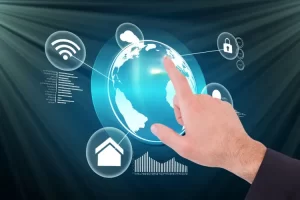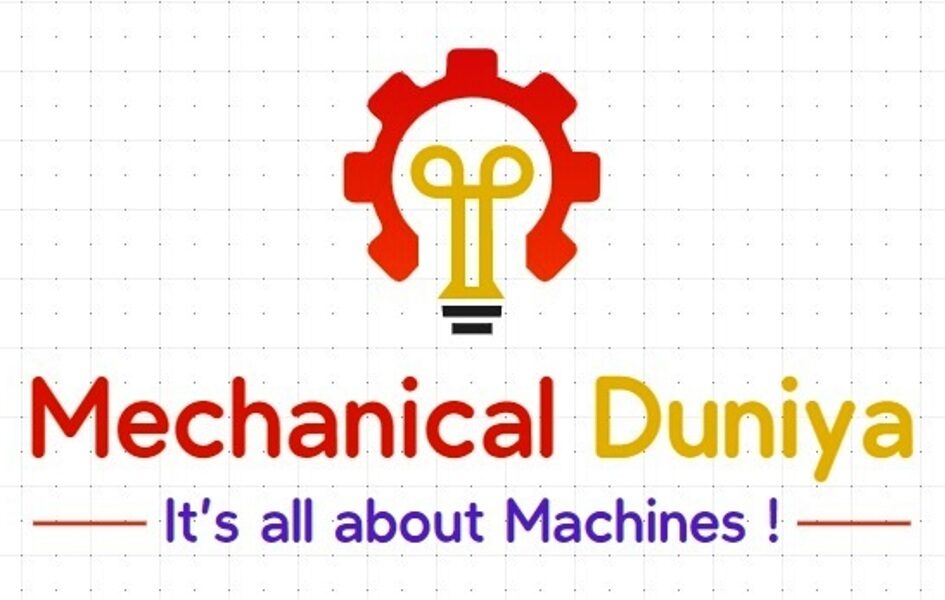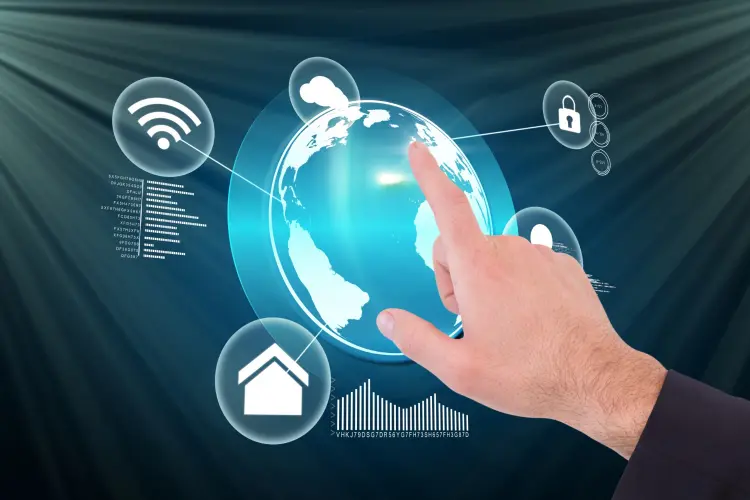In an era where environmental sustainability is becoming increasingly important, the intersection of the Internet of Things (IoT) and energy efficiency is a sign of hope. This article explores the revolutionary role of IoT in transforming sustainable living and explores its applications, benefits, and future impacts.
Table of Contents
The rise of IoT in energy efficiency:
IoT has become a game changer in energy efficiency, offering unprecedented opportunities for monitoring, control, and optimization. IoT enables real-time data collection and analysis by seamlessly connecting devices, sensors, and systems, paving the way for smarter energy management strategies.

Smart Buildings – A Catalyst for Change:
Smart buildings are at the forefront of IoT-based energy efficiency. These smart structures use IoT sensors to monitor various parameters such as temperature, lighting, and occupancy. Thanks to advanced analysis and automation, smart buildings optimize energy consumption, reduce waste, and increase living comfort.
Renewable Energy Integration:
IoT also facilitates the seamless integration of renewable energy sources into the power grid. Using IoT-compatible monitoring and control systems, renewable energy sources such as solar panels and wind turbines can be optimized for maximum efficiency and effectiveness. This synergy between the Internet of Things and renewable energy sources is driving the transition to a cleaner and more sustainable energy ecosystem.
Data-Driven Insights:
At the core of IoT energy efficiency is the abundance of information generated by networked devices. Advanced analytics algorithms can transform this data into actionable insights, allowing decision-makers to identify energy savings opportunities, predict maintenance needs, and optimize overall system performance.
Supporting sustainable lifestyles:
In addition to buildings and infrastructure, IoT enables people to adopt sustainable lifestyles. Smart home devices, energy monitoring apps, and connected devices allow consumers to monitor their energy consumption in real time, make informed choices, and reduce their environmental footprint.
Future trends and challenges:
The future of IoT in energy efficiency looks promising but challenging. As technology continues to evolve, so do the challenges of scalability, interoperability, and cybersecurity. Removing these barriers is critical to harnessing the full potential of IoT for sustainable energy management.
Conclusion:
In short, it can be said that the Internet of Things is a force for change in the search for energy efficiency and sustainability. From smart buildings to renewable energy integration and more, the Internet of Things is shaping the way we live, work, and interact with the environment. By harnessing the power of IoT, we can build a brighter and greener future for generations to come.
FAQs on IoT and Energy Efficiency:
-
What exactly is IoT and how does it relate to energy efficiency?
- Answer: IoT, or Internet of Things, refers to the network of interconnected devices embedded with sensors, software, and other technologies that enable them to collect and exchange data over the Internet. In the context of energy efficiency, IoT devices such as smart thermostats, lighting systems, and appliances can monitor energy usage in real time, analyze data, and adjust settings automatically to optimize energy efficiency.
-
What are some examples of IoT devices used for enhancing energy efficiency at home?
- Answer: Examples of IoT devices for home energy efficiency include smart thermostats like Nest Learning Thermostat, smart lighting systems such as Philips Hue bulbs, smart plugs like TP-Link Kasa, and energy-monitoring devices like Sense Home Energy Monitor.
-
How does IoT technology contribute to reducing energy consumption in buildings and infrastructure?
- Answer: IoT technology allows for real-time monitoring and control of energy usage in buildings and infrastructure. By collecting data from sensors embedded in various systems, such as HVAC, lighting, and appliances, IoT platforms can identify inefficiencies, optimize energy usage, and automate energy-saving measures.
-
Can you explain how IoT enables the integration of renewable energy sources into the power grid?
- Answer: IoT facilitates the integration of renewable energy sources into the power grid by providing real-time monitoring and control capabilities. IoT-enabled sensors can monitor renewable energy generation, grid demand, and storage capacity, allowing for more efficient management and utilization of renewable energy resources.
-
What are the benefits of using IoT-enabled smart energy management systems in commercial buildings?
- Answer: The benefits of using IoT-enabled smart energy management systems in commercial buildings include improved energy efficiency, reduced operational costs, enhanced occupant comfort and productivity, and better compliance with energy regulations and sustainability goals.
-
How does IoT facilitate real-time monitoring and optimization of energy usage in industrial settings?
- Answer: In industrial settings, IoT sensors collect data on energy consumption, machine performance, and environmental conditions. This data is then analyzed in real-time to identify opportunities for energy optimization, predictive maintenance, and process improvement, ultimately leading to increased efficiency and reduced downtime.
-
Are there any privacy or security concerns associated with IoT devices used for energy efficiency?
- Answer: Yes, there are privacy and security concerns associated with IoT devices used for energy efficiency. These concerns include unauthorized access to personal data, vulnerabilities in device firmware or software, and potential breaches of network security. Manufacturers and users need to implement robust security measures to mitigate these risks.
-
How can individuals leverage IoT technologies to monitor and reduce their household energy consumption?
- Answer: Individuals can leverage IoT technologies by installing smart devices such as smart thermostats, smart plugs, and energy monitors in their homes. These devices allow users to monitor energy usage in real-time, set schedules for energy-intensive appliances, and receive insights and recommendations for reducing energy consumption.
-
What are some challenges and barriers to the widespread adoption of IoT for energy efficiency?
- Answer: Some challenges and barriers to the widespread adoption of IoT for energy efficiency include high initial costs, interoperability issues between different IoT devices and platforms, concerns about data privacy and security, and the need for technical expertise to install and maintain IoT systems.
-
What are the future trends and potential innovations in the field of IoT and sustainable energy management?
- Answer: Future trends in IoT and sustainable energy management may include advancements in artificial intelligence and machine learning for predictive analytics, greater integration of renewable energy sources and energy storage technologies, the development of smart grids and microgrids, and the emergence of innovative business models and regulatory frameworks to incentivize energy efficiency and sustainability.

